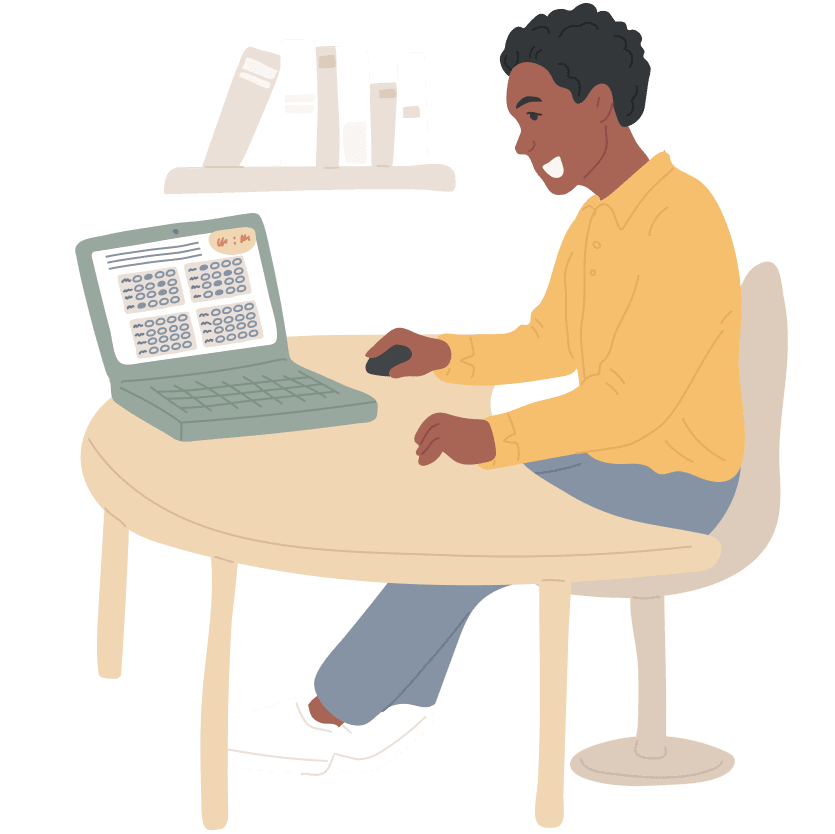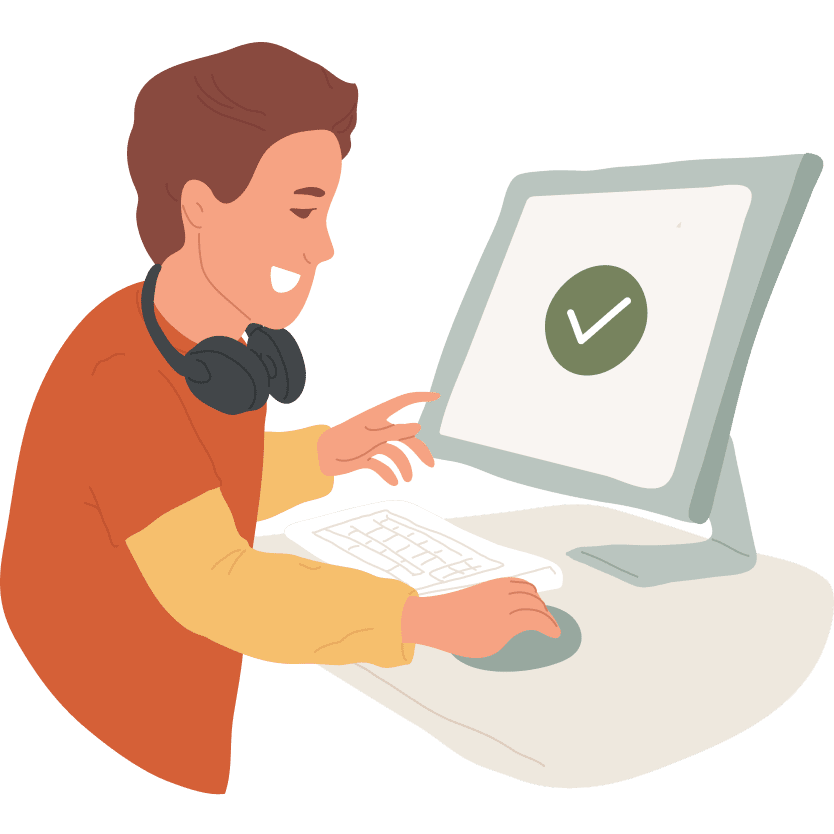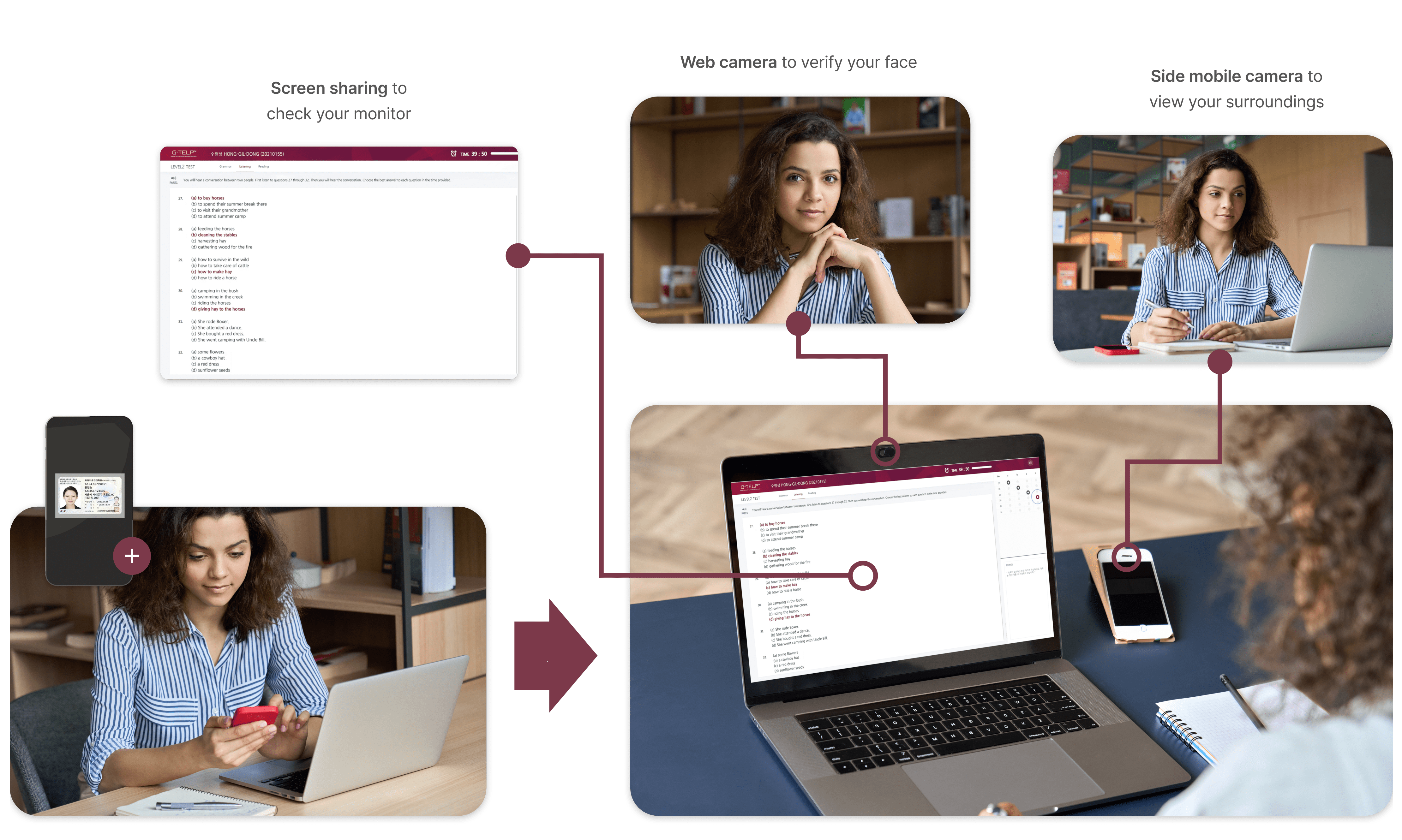The examinee has demonstrated the ability to communicate effectively with native English speakers. The examinee may be able to express his/her own ideas. The listening section is made up of questions that require examinees to listen to declarative or interrogative sentences. After listening to a description of an object, or a description of a subject engaging in an action, examinees choose pictures or sentences that best match the content. It also contains questions about conversations, descriptions, and instructions related to daily life. The reading section is made up of questions that require examinees to evaluate simple present tenses, infinitives, possessive pronouns, prepositions of time, gerunds, conjunctions, articles, etc. It also contains questions about the meaning of specific words and the overall content of school announcements and encyclopedia articles.
The examinee has achieved a certain level of reading and listening skill. Using short sentences, the examinee may express his/her opinion. The listening section is made up of questions that require examinees to listen to interrogative sentences. After listening to a description or a short conversation, examinees choose pictures or sentences that best match the content. The reading section is made up of grammar questions that require examinees to evaluate demonstrative pronouns, personal pronouns, possessive pronouns, prepositions of place and time, gerunds, comparative adjectives, articles and conjunctions. It also contains questions about the meaning of specific words and the overall content of short stories, personal letters, encyclopedia articles, and advertisements/announcements.
The examinee can comprehend short written sentences and short conversations. The listening section is made up of questions that require examinees to listen to declarative or interrogative sentences. After listening to these sentences, examinees choose pictures or responses that best match the content. The reading section is made up of questions that require examinees to evaluate simple present/past tenses, nouns/pronouns, adjectives, infinitives, prepositions, etc. Some questions require examinees to find missing words in sentences composed of basic words. The reading section also contains questions about the meaning of specific words as well as the overall content of letters, advertisements and short stories.
The examinee has a limited understanding of basic grammar and may communicate using simple words. The listening section is made up of questions that require examinees to listen to declarative or interrogative sentences. After listening to those sentences, examinees choose pictures, words, or sentences that best match the content. The reading section is made up of questions that require examinees to evaluate simple present progressive, comparative forms, adjectives, prepositions of place and time, etc. It also focuses on understanding overall content and consists of questions that require examinees to find missing words in sentences composed of basic words.
The examinee may recognize simple words and sentences but may have difficulty with spontaneous production. The listening section is made up of questions that require examinees to understand sentences about personal information and expressions related to actions and basic words. The reading section is made up of questions that require examinees to understand basic parts of speech and words related to nature, sports, school supplies, school life, food, and items for use at home.




